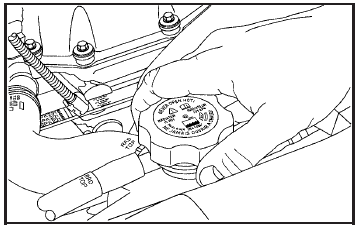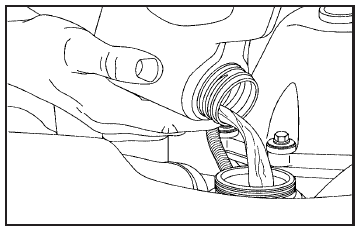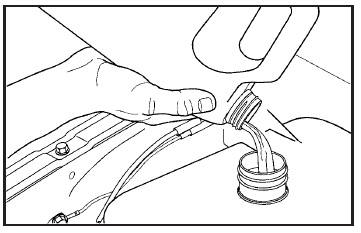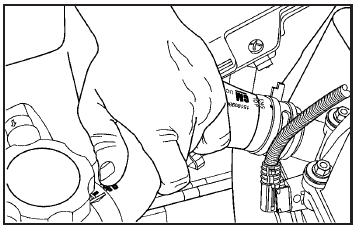How to Add Coolant to the Radiator

1. You can remove the radiator pressure cap when the cooling system, including the radiator pressure cap and upper radiator hose, is no longer hot.
Turn the pressure cap slowly counterclockwise about one full turn. If you hear a hiss, wait for that to stop. A hiss means there is still some pressure left.
2. Then keep turning the pressure cap. Remove the pressure cap.

3. Fill the radiator with the proper DEX-COOL® coolant mixture, up to the base of the filler neck. See Engine Coolant on page 379 for more information about the proper coolant mixture.

4. Then fill the coolant recovery tank to the
FULL COLD mark.
5. Put the cap back on the coolant recovery
tank, but leave the radiator pressure
cap off.

6. Start the engine and let it run until you can feel the upper radiator hose getting hot.
Watch out for the engine cooling fan.
7. By this time, the coolant level inside the
radiator filler neck may be lower. If the level is
lower, add more of the proper DEX-COOL®
coolant mixture through the filler neck until the
level reaches the base of the filler neck.
8. Then replace the pressure cap. At any time
during this procedure if coolant begins to flow
out of the filler neck, reinstall the pressure
cap. Be sure the pressure cap is hand-tight
and fully seated.
See also:
Safety System Check
Now and then, check that the safety belt reminder light, safety belts, buckles,
latch plates, retractors, and anchorages are all working properly. Look for any
other loose or damaged safety belt s ...
CD Player
For vehicles equipped with the
MyLink or IntelliLink infotainment
system, see the separate MyLink/IntelliLink Features and Functions
Guide for more information.
The player can be used for CD
...
Parking Brake and Automatic
Transmission P (Park) Mechanism
Check
WARNING:
When you are doing this check, the vehicle could
begin to move. You or others could be injured and
property could be damaged. Make sure there is
room in front of the vehicle in case it ...


